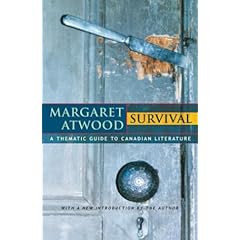SUR-VIV-ALL
As promised, here’s the link of the SUR-VIV-ALL project. The idea is described below, and crosses literature, psychogeography, imaginary, GPS writing/drawing and locative media. There are videos, photos and mapping of free and close wireless hotspots. It is the first project in Edmonton.
Please, don’t bother. They may be some errors in photos and videos ans we are working on it …

____________________________________
CREDITS
PROJECT – André Lemos
PHOTOS, VIDEOS, WARDRIVING AND GPS TRACKING – André Lemos, Mari Fiorelli and Rob Shields
MAPS AND BLOG – André Lemos and Mari Fiorelli
____________________________________
GPS Writing, SUR-VIV-ALL
The idea came from the crossing of my reading of the book by Margaret Atwood, “Survival,” with my research on locative media, city, mobility and new technologies. In the book “Survival”, the author defends the thesis that the relationship with the survival is a pattern in the imagination of Canadian literature, both of prose and poetry: fighting the forces of nature, the natives, and the animals. . So, from my research on locative media, I plan to “write” the city of Edmonton (on 40 km) with a GPS Tracker, and mapping some hotspots along the way (using iStumbler, Loki, Google Maps, Google Earth…). For the first GPS draw take a look at Jeremy Wood work. What I was looking for here, in addition to entertainment, was a way to get closer to the city, to understand and feel their spaces, their dynamics. But, basically, a way to see my “survival” here.
The word “SURVIVAL” has been changed to “SUR-VIV-ALL,” trying to create different meanings in English and French, the official languages Canada, and in Portuguese, my mother language. In French we can see or inferred “SUR VIV (R) E / VIE …”, something like an excess and a lack of life, just when survival is the least and last resort of existence. In Portuguese, “VIVA”, claiming to live, an imperative. In English “survival”, has its original meaning, plus the “ALL” that calls for a social dimension, the public and community.
What is at stake here is the imagination of the city, the relationship with extreme temperatures, the use of cars as standard displacement, the empty spaces, the invisibility of electronic processes (written by the GPS is invisible as well the hotspots Wi – Fi) on the actual structures in the midst of public space. We have photos, videos that attempt to capture this relationship, but with the thread to link with the outside world, the nature. The “Waypoints” on the map will show (as soon as we fished the data transfer) this multimedia content, as well as Wi-Fi hotspots open (we’ve accessed some networks on the street) or closed.
André Lemos
_________________________________________________
Excerpt – Survival, Margaret Atwood
“The persistent cultural obsession of Canadian literature, sad Survival in 1972, was survival. In actual life, and in both the anglophone and francophone sectors, this concern was often enough a factor of the weather, as when the ice storm cuts off the electrical power” (Preface, edition 2004, p. 8)
“The original Survival question was: Have we survived? It was a good place to end in 1972, and it’s a good place now” (Preface, edition 2004, p. 13)
“The central symbol for Canada – and this is based on numerous instances of its ocurrence in both English and French Canadian literature – is undoubtedly Survival, la Survivance” (p. 41)
“…a survival can be a vestige of a vanished order which has managed to persist after its time is past, like a primitive reptile (…). But the main idea is the first one: hanging on, staying alive.” (p. 41)
“Let us suppose (…) that Canada as a whole is a victim, or an ‘oppressed minority’, or ‘exploited.” (p. 45)
“Canadian writers as a whole do not trust Nature, they are always suspecting sone dirty trick. An often-encountered sentiment is that Nature has betrayed expectation, it was supposed to be different.” (p. 59)


